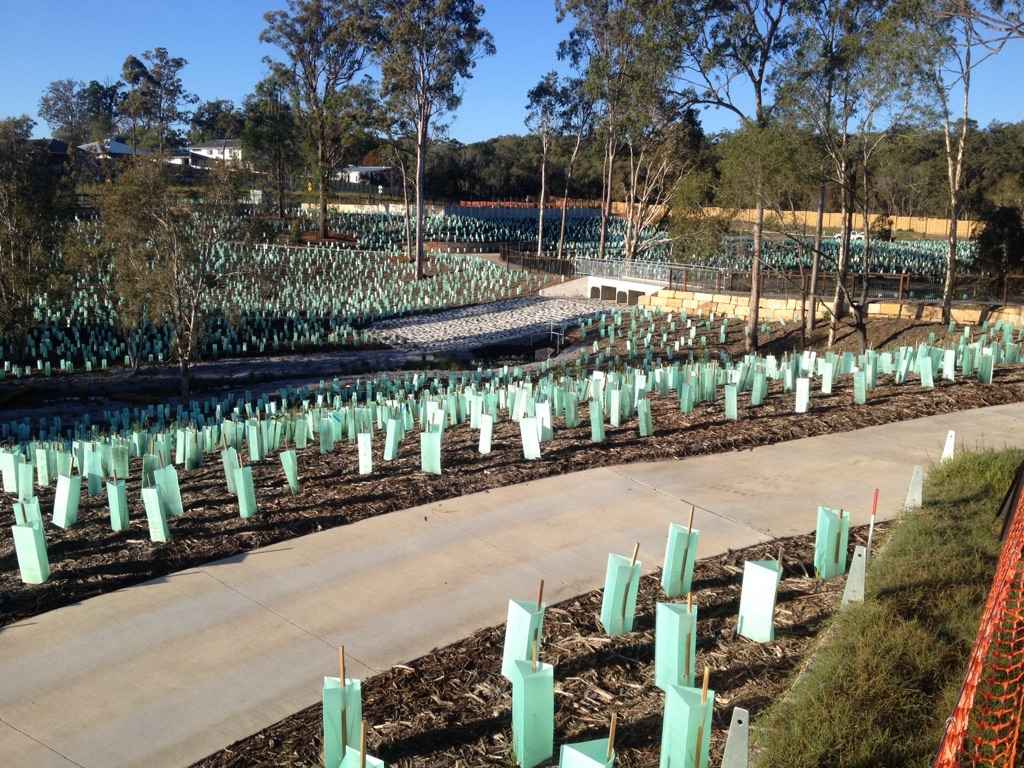It's common these days to drive past an area where all vegetation has been removed to make way for a residential development, leaving the natural landscape completely decimated.
Trees are removed due to the bulk earthworks required to create flat platforms for lots and BLE (building location envelopes). Once the lots have been levelled, retaining walls installed, and roads completed, new vegetation is introduced in the form of street trees to recreate a natural environment. But it’s rarely enough.
A residential development with street trees at the minimal size of 25L, planted at the usual frequency of one per lot creates a sterile setting, and unnecessarily too, if there is nearby vegetation that can be retained and enhanced.
Retaining existing water bodies such as dams or creeks with associated riparian vegetation, overland flow paths and open woodland forests can increase the value of the development and individual lots as well as maintaining the existing natural ecosystem and fauna habitat. Natural features such as these can also create a serene, tranquil living environment. An environment where the kids can play and you can walk your dog – the perfect backdrop to a new home.
AS Design has recently completed a 64 lot subdivision at 70-92 Muller Road, Redland Bay. The development has pockets of strategically located lots to the east and west of the site, which is bisected by a central overland flow path / creek. This central zone acts as a corridor or green ‘belt’ than runs through the site and connects to bushland on both sides.
While the construction of the lots did involve some tree removal, many trees and much of the existing vegetation was retained. A stand of large eucalypts along the western boundary of the site, where it adjoins an existing residential development, was preserved and protected for the future with the construction of specifically designed retaining walls.
Weed species were removed and grasses slashed in the existing central green zone which was bolstered with dense rehabilitation planting of native species endemic to the area, comprising groundcovers, shrubs and trees capable of sustaining stormwater surges when required.
Existing vegetation with rehabilitation planting
At just over two hectares in size, this central green zone contributes to the distinct character and feel of the new development, with native plant species encouraging wildlife, and walking paths meandering through the central open space.
Retaining existing vegetation bolstered with rehabilitation planting maintains ecosystems, adds to property value, and creates a backdrop for a thriving community – it’s importance cannot be underestimated.
Rehabilitation planting of native species encourages wildlife




